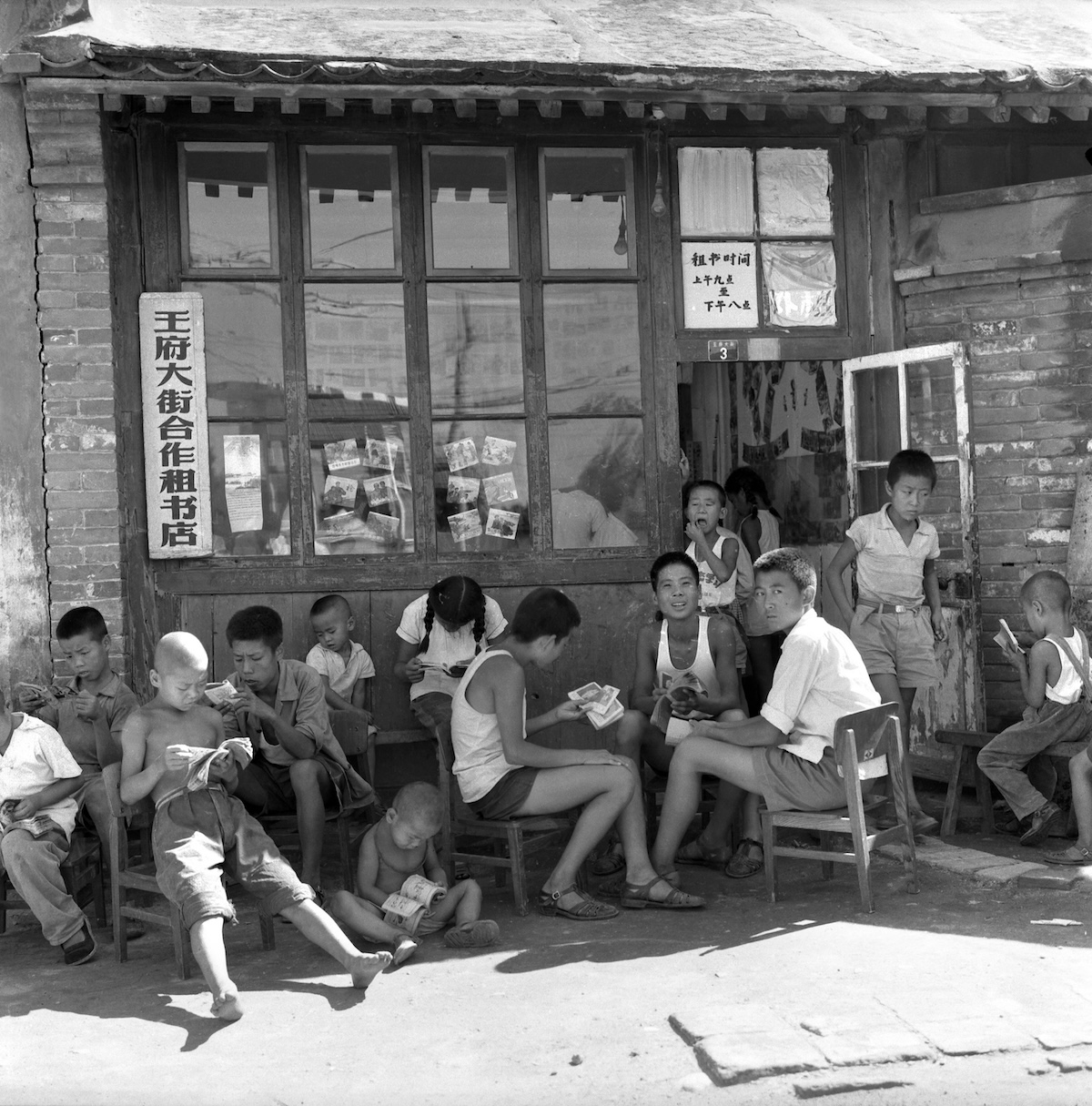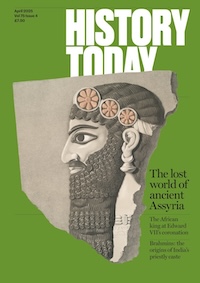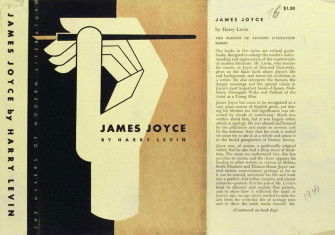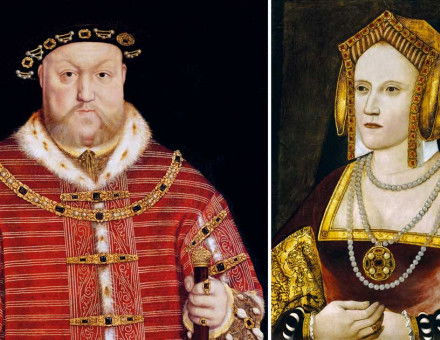China’s Communist Comic Books
How did the People’s Republic of China cope with a literary canon filled with un-communist ideas? Comics called lianhuanhua were the answer, at least for a while.

The Chinese folk tale The Snail-Shell Girl tells the story of a poor man who falls in love with a beautiful woman who lives in a shell, their path to happiness thwarted by an evil landlord. Adapted from a compendium of fourth-century legends, the tale was published as a lianhuanhua in 1957. Lianhuanhua (‘serial picture stories’), read by children and adults alike, are palm-sized books with two or three lines of text and one image per page. They emerged in China’s Republican period (1911-49) and were rented and sold in their thousands.
Between 1949 and 1966 the Communist state co-opted the medium for propaganda, and publishing of lianhuanhua boomed. New genres, such as tales about the heroics of the revolutionary wars, were introduced, competing with the ever-popular adaptations of Chinese classics such as Snail-Shell.
But the popularity of Snail-Shell presented a problem: given its focus on systemic class oppression, it is unsurprising that the state liked the story. The issue was that the protagonist’s salvation comes through supernatural intervention. By the time of Snail-Shell’s publication in 1957 the Chinese Communist Party (CCP) had long questioned how to draw on a literary canon which included a tradition of demons, gods and spirits. The CCP prided itself on being founded on ideas of rational and scientific thinking – the supernatural ran counter to that. In 1942, in his ‘Talks at the Yan’an Forum On Literature and Art’ (which later formed the basis of the treatment of China’s literary legacy in the early PRC), Mao Zedong argued that ‘old forms’ could be ‘remoulded and infused with new content’. Tasked with overseeing the transformation of lianhuanhua publishing, in 1951 the Cultural Bureau expressed concerns about titles with overly ‘pessimistic’, ‘fatalist’, or ‘superstitious’ content, which countered ‘rational and scientific thinking’. But they were not banned outright. Instead, revamped stories were published that combined communist rhetoric with supernatural intervention. These stories both celebrated China’s cultural heritage and satirised society before communism.
Many lianhuanhua are love stories in which the protagonist falls for a beautiful, but supernatural, heroine, who is in turn charmed by his filial piety and work ethic. Themes of freedom of choice in marriage had dominated CCP discourse since the inception of the New Marriage Law in 1950, which, among other things, required both parties to consent to the match, something the party was keen to present as revolutionary.
The Snail-Shell Girl is set in rural ancient China. In the story, the heroine, Tianluo, watches the protagonist, Xie Duan, as he works, and secretly uses her magical powers to irrigate his crops and cook the family meal. After Xie Duan learns of the subterfuge he asks her not to hide any more and to join the family. Their happily ever after is put on hold, however, when Xie Duan’s landlord tries to force Tianluo to marry him instead.
Landlords’ suppression of the peasant class was another common theme which spoke to broader CCP rhetoric. Land reform, redistributing land from exploitative landlords to peasants, was a priority for the party and repeated campaigns saw confiscations and sometimes violent retributions against landlords by tenants. In Snail-Shell, in addition to trying to force Tianluo to marry him, the landlord leaves Xie Duan the most infertile wasteland to grow crops. Readers could contrast the lives of the imagined oppressed in ancient China with their own under socialism, where the oppressive landlord class no longer dominated – thanks, of course, to communism.
Yet while freedom of choice in marriage and class oppression reflected the party’s rhetoric, the prevailing power of the supernatural seemingly contradicted it. In the concluding moments of Snail-Shell Tianluo uses her powers to punish the oppressors and sweep away the landlord and corrupt officials in a flood. To justify this, these stories were accompanied by introductions which explained that such themes offered insights into thinking in ancient Chinese societies, where, as they had yet to reach their revolutionary potential, oppressive forces and ideas about supernatural and magical intervention prevailed.
The 1955 introduction to Starling, a folk tale which tells of a clever bird in ancient China who collects silver for his poor master, explains how the story:
reflects how much the ancient working people yearned for freedom and wanted to resist the government’s oppression … They created the lovely idea of the starling; using the legend to satirise those stupid and greedy rulers; what great wisdom!
Lianhuanhua went beyond just imparting communist values, however. As Liu Xun, editor in chief of a magazine about lianhuanhua, put it in 1954, these stories celebrated Chinese mythology and had ‘passed through the baptism of time and solidified the excellent qualities of the Chinese people: bravery, diligence, kindness and modesty’. An introduction to the 1962 edition of Snail-Shell justified its re-publication as a ‘beautiful and moving folk legend’.
The authorities soon changed their mind, however. Lianhuanhua with supernatural elements started to be banned from 1965, following more restrictive national cultural policies that would lead to the Cultural Revolution the following year. Lianhuanhua that had once been, if not celebrated, at least tolerated for including the ‘strange’ were now ‘superstitious’. But even on the eve of the Cultural Revolution there was no wholesale condemnation of Chinese mythology, nor monsters and demons. Some stories, such as the canonical Journey to the West, of which Mao was a fan and which had a lianhuanhua adaptation in 1962, were simply too well established.
The Lianhuanhua Review Group, established in 1965, was tasked with surveying the lianhuanhua in circulation, drawing up a list of those that needed to be banned, and organising their collection – although it warned that lax regulation meant banned titles could continue circulating. Lianhuanhua featuring women turning into animals or magical creatures to seduce the hero were among the first to go.
From 1966 to 1976, newly published lianhuanhua were largely limited to propagating approved stories that focused on the revolutionary struggle,
a campaign spearheaded by Jiang Qing, Mao’s wife. Lianhuanhua as a medium survived the Cultural Revolution, however, and in the late 1970s and 1980s many formerly banned titles were again published. New adaptations of Snail-Shell circulated. Those from before the Cultural Revolution had survived in private collections.
Rebecca Scott is Teaching Associate in Modern Chinese History at the University of Nottingham.






